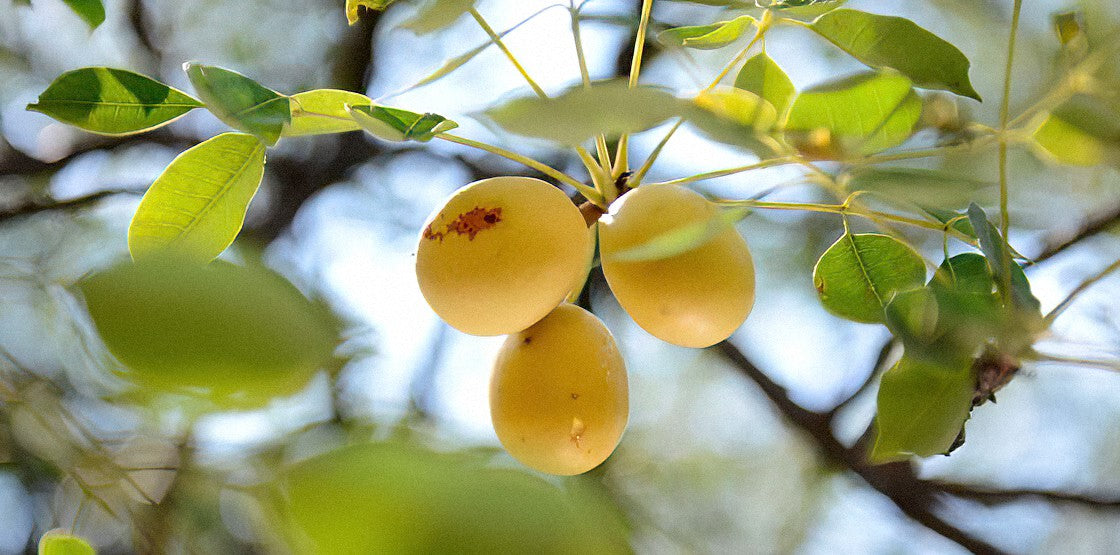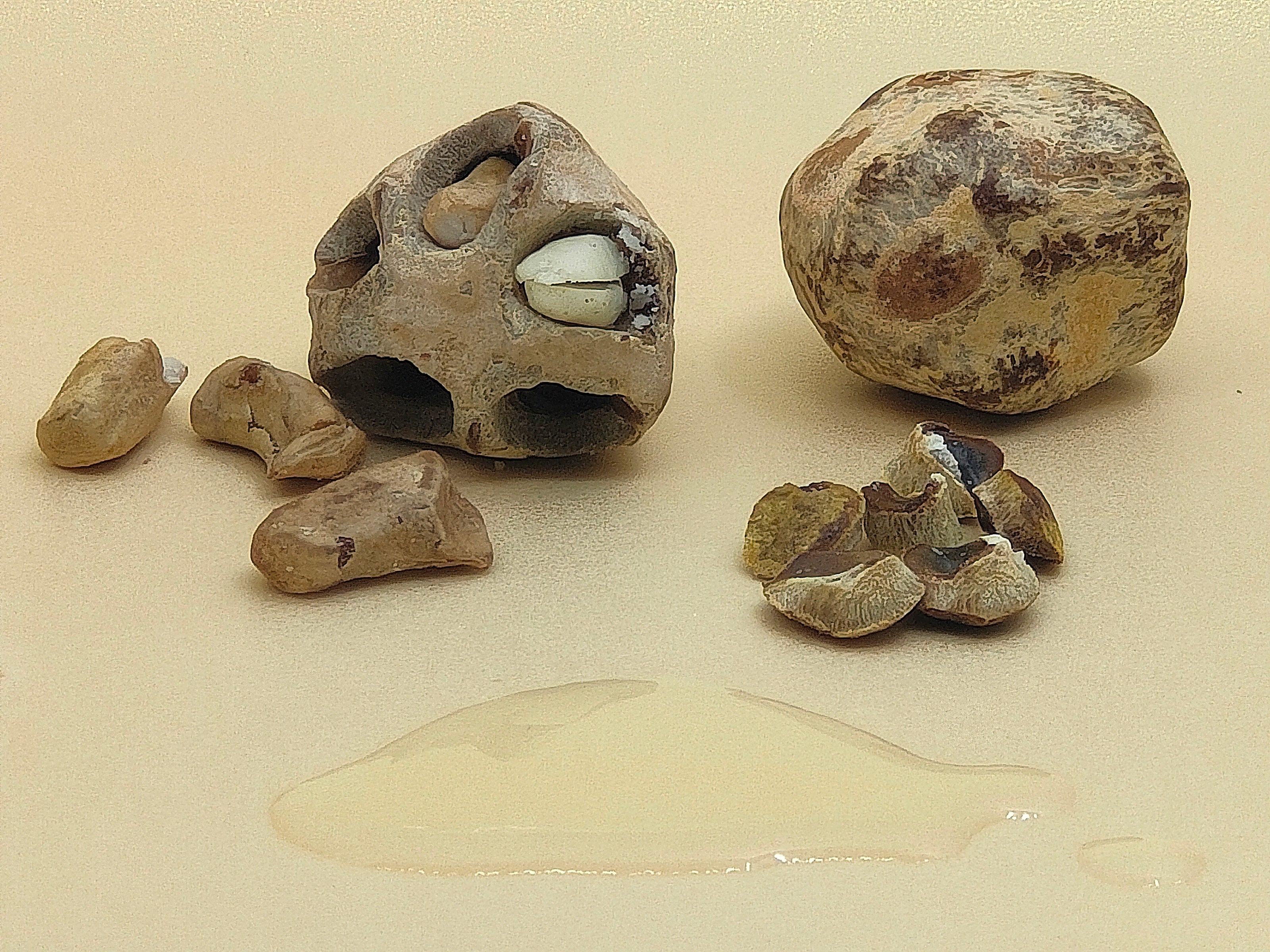In short,
Marula is an indigenous tree in South African regions, bearing wild fruits with various applications. It belongs to the mango/cashew/pistachio family. Every part of the tree, from leaves, bark, wood, roots, and fruit, has a high amount of nutritional properties - vitamins, minerals and phenolic compounds. The marula fruit is rich in vitamin C, and its extracts have antioxidant, antibacterial, antifungal, astringent, anticonvulsant, antihyperglycemic, anti-inflammatory, and antiatherogenic properties. The fruit is consumed fresh or processed. The fruit contains considerable amounts of dietary fiber, protein, vitamins (A, B, C, E, and carotene), minerals (potassium, magnesium and calcium), amino acids, and fatty acids. The main structural classes of the marula fruit include polyphenols, flavonoids, condensed tannins and polysaccharides (pectin), these components can prevent chronic and degenerative diseases. The marula fruit is a functional food because of its components that have beneficial properties on health and prevention of diseases. Additionally, the fruit has high levels of antioxidant activity compared to most other edible fruits.
And some more:
-

The Marula Tree
The Marula tree (Sclerocarya birrea) belongs to the mango/cashew/pistachio family and grows wild primarily in the Southern part of Africa, where it plays a vital role as a source of nutrients and income. The tree is a single-stemmed tree with a wide-spreading crown and can grow up to 18 meters tall in low to average altitudes (up to 1000 m) and in open woodlands. The fruits ripen at the end of summer and have light-yellow skin (exocarp) with white flesh (mesocarp). They fall to the ground when unripe and green in color and then ripen to yellow color. The fruits are drupes with seeds encased within their endocarp. They are succulent and tart with a strong and distinctive flavor. Inside is a walnut-sized, thick-walled stone (endocarp). When dry, these stones expose 1-4 seeds by shedding small circular plugs at one end. The seeds have a delicate nutty flavor and are much sought-after, especially by small rodents and birds who know to gnaw precisely where the plugs are located. The trees are dioecious (male and female trees) and deciduous (shed leaves in winter). Male trees produce multiple male flowers. On a rare occasion, a male flower can make a gynoecium, turning it bisexual. Female trees have female flowers that grow individually on their pedicel and eventually turn into the Marula fruit if fertilized.
-

The Marula Fruit
The fruits are edible and very high in vitamins, minerals, and antioxidants. Plum-sized with a thick yellow sink when ripe, the flesh clings to the endocarp stone and is very fibrous and juicy. The fruit has a unique tropical pineapple flavor, usually ripe at the end of summer and the beginning of fall. Vitamin C content has attracted the most attention of the wide range of nutrients in the Marula pulp. It has, on average, four times the Vitamin C of an Orange with up to 260 mg per 100g. The fruit has small amounts of other vitamins such as thiamine, riboflavin, and nicotinic acid. It is 85% moisture and 14% carbohydrate, mainly sucrose. The mineral composition of the fruit shows high concentrations of Potassium, Calcium, and Magnesium. The smell of Marula juice has also been likened to pineapple, but this is also only in part due to complimentary volatile components such as ethyl acetate, Benzaldehyde, and linalool.
-

The Marula Seed and Oil
The Marula seed is a delicious nut rich in Potassium, proteins, amino acids like leucine and sulfur-containing methionine, and cysteine with a predominance of glutamic acid and arginine, bringing it to “super-food status.” In terms of fats and fatty acid composition, the Marula seed was found to contain 85.24% monounsaturated (MUFAs) and 14.76% saturated (SFAs) fatty acids, with neither polyunsaturated (PUFAs) nor trans (TFAs) fatty acids. All MUFAs are composed of oleic acids (OA), a fatty acid less sensitive to oxidation relative to PUFAs, while the SFAs were only palmitic (9.65%) and stearic (5.11%) acids.
Marula oil – Marula oil absorbs quickly into the skin, leaving behind a slight trace of oil. Because of this, it is safe for clothing and leaves the hands feeling oil-free and non-greasy.
Due to the quick absorption, Marula oil is an excellent protective moisturizer to apply before applying makeup. It can be used in the morning as a moisturizer and at night to remove makeup and nourish the skin.



